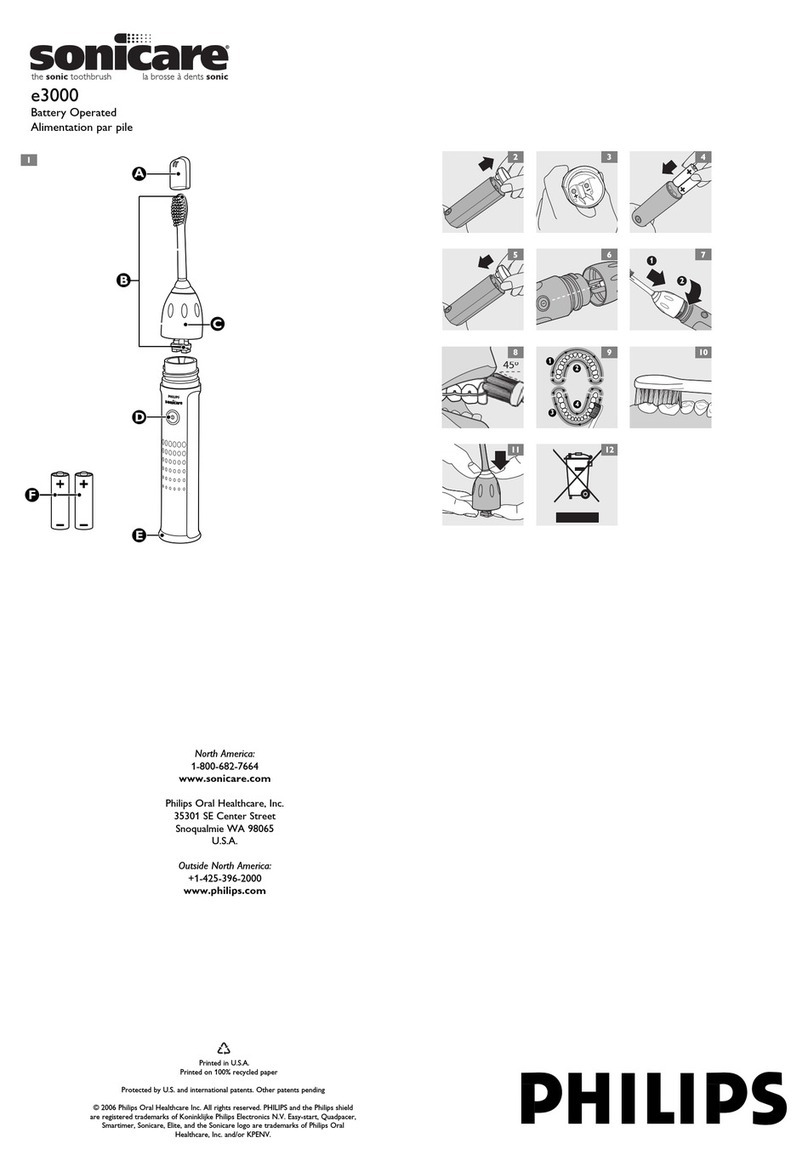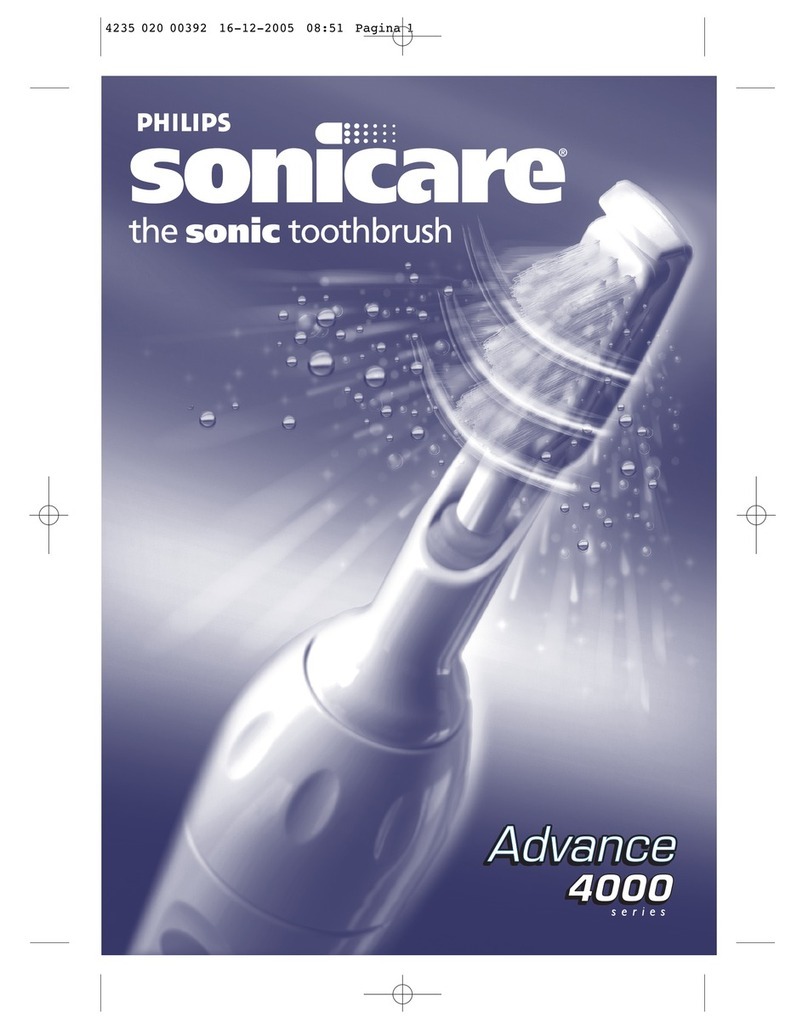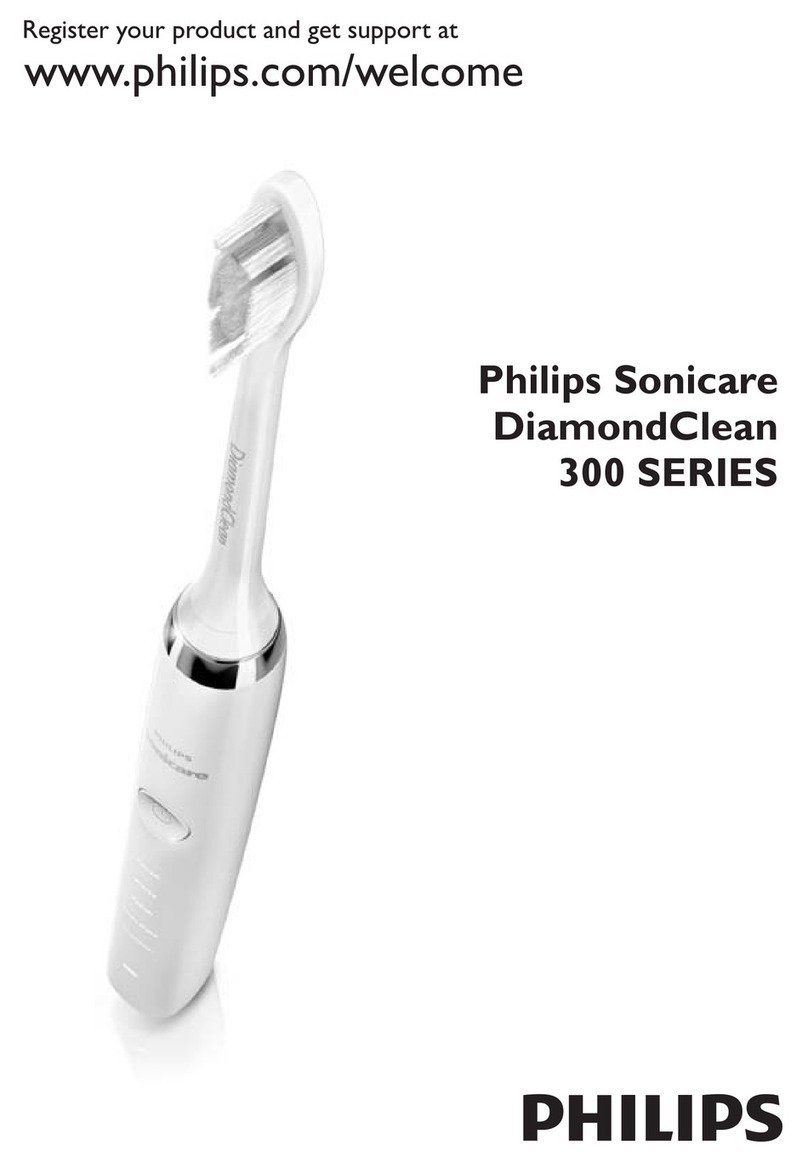Sonicare essence e5000 Series User manual




















Table of contents
Languages:
Other Sonicare Electric Toothbrush manuals
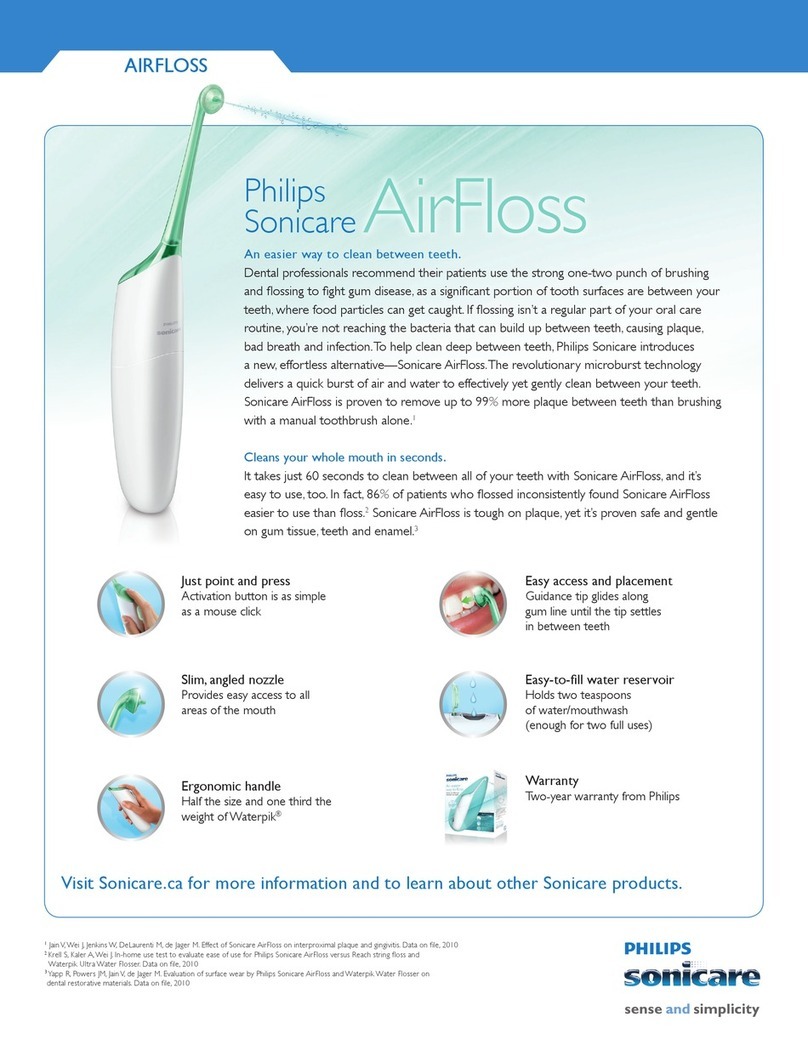
Sonicare
Sonicare AirFloss Instruction Manual

Sonicare
Sonicare FlexCare+ HX6993/03 User manual

Sonicare
Sonicare AirFloss Instruction Manual

Sonicare
Sonicare 400 Series User manual
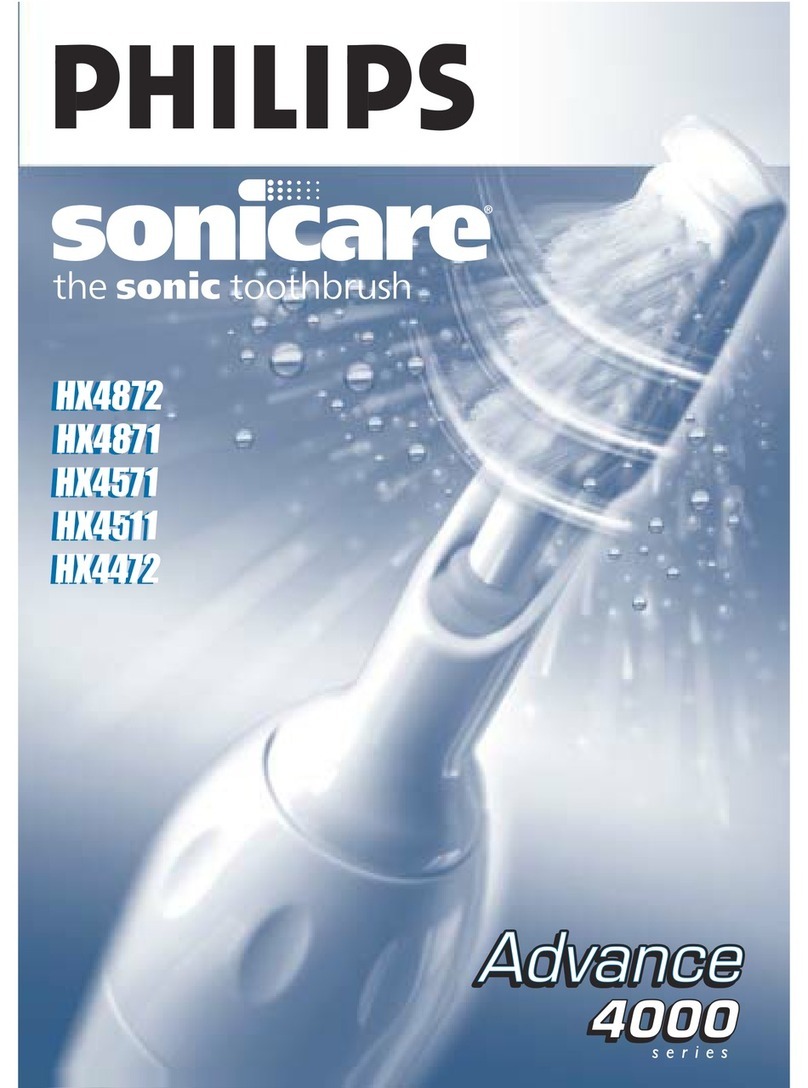
Sonicare
Sonicare HX4472 User manual
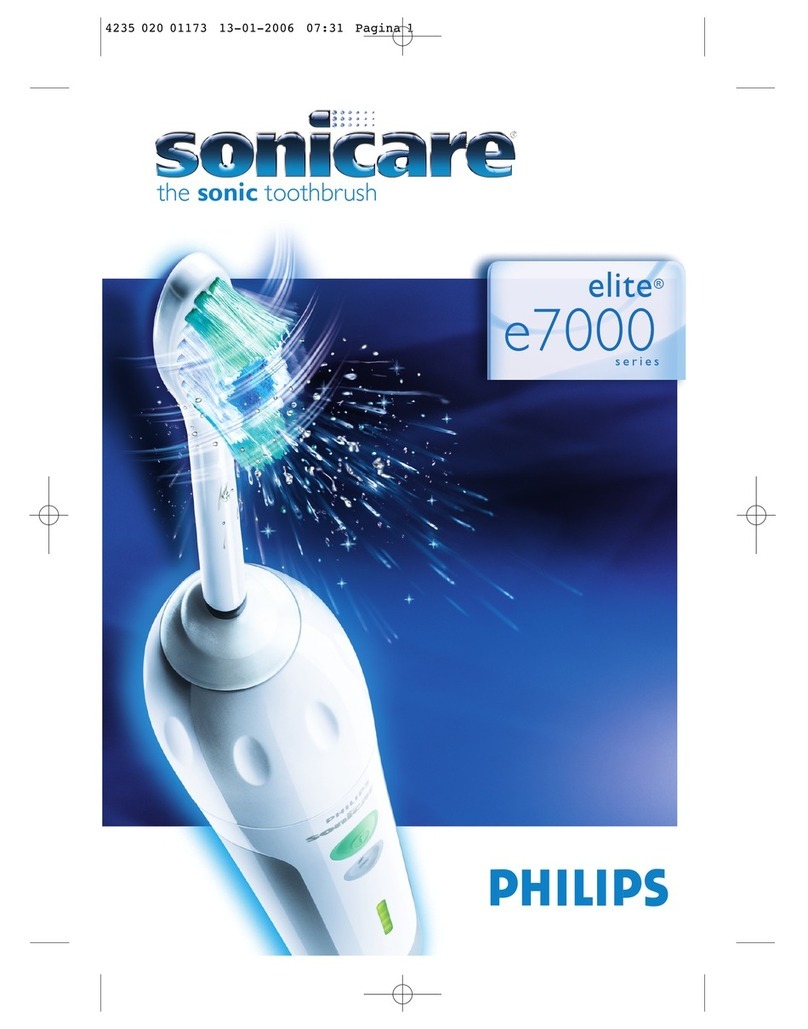
Sonicare
Sonicare elite e7000 Series User manual

Sonicare
Sonicare AirFloss Installation and operation manual

Sonicare
Sonicare Advance 4000 Series User manual

Sonicare
Sonicare DiamondClean 300 series User manual

Sonicare
Sonicare Elite 5000 Series User manual
Popular Electric Toothbrush manuals by other brands

Philips
Philips Sonicare DiamondClean Classic HX9371 manual

Braun
Braun Oral-B PRO TRIZONE 600 manual
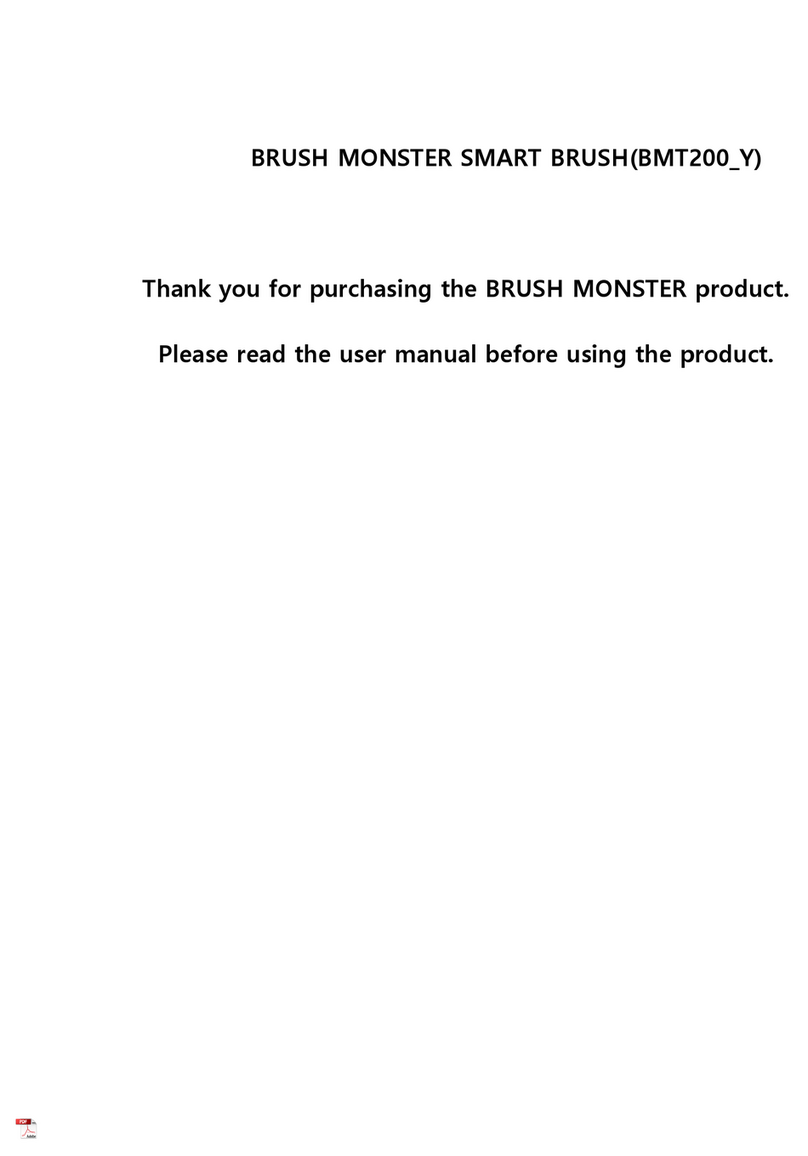
Kitten Planet
Kitten Planet BRUSH MONSTER manual

Braun
Braun Oral-B Professional Healthy Clean + ProWhite PRECISION... manual
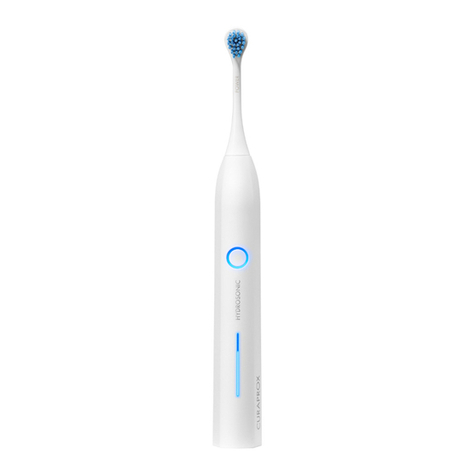
CURAPROX
CURAPROX HYDROSONIC ORTHO Instructions and tips

Philips
Philips Sonicare FlexCare Platinum user manual
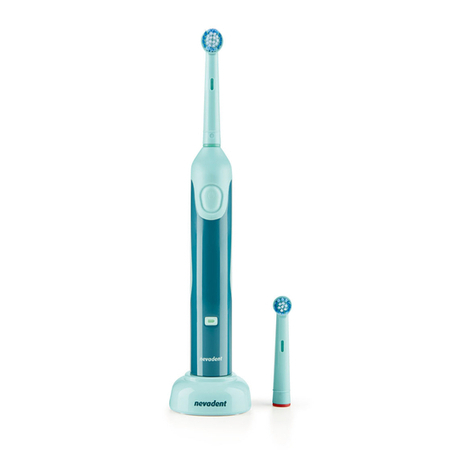
Nevadent
Nevadent NZAK 3.7 A1 operating instructions

Nevadent
Nevadent NSZB 3.7 B2 operating instructions

Oral-B
Oral-B Oral B 1500 user manual
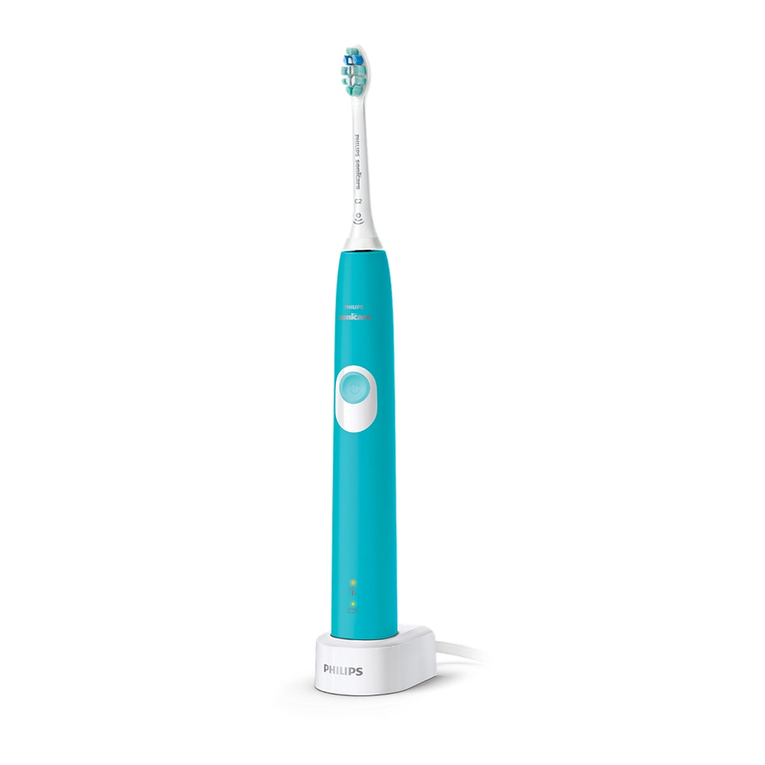
Philips
Philips Sonicare ProtectiveClean 4100 user manual

Philips
Philips Sonicare DiamondClean 300 SERIES manual

Dentalux
Dentalux PROFESSIONAL CARE DZB 3 A1 operating instructions

